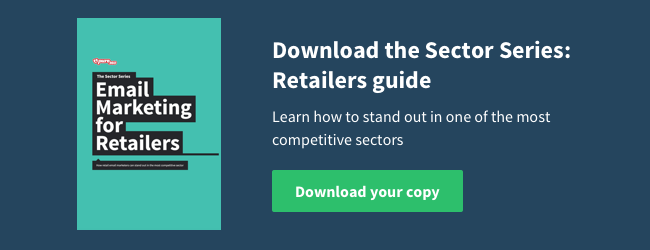Most adults have fond childhood memories of Lego – after all, it’s regularly voted one of the best-loved and most influential toys of all time (Time, 2011). In fact it’s so popular that Lego claims that on average, every person on earth has 70 Lego bricks (The Telegraph, 2011).
It’s a far cry from 10 years ago when the company was on the brink of bankruptcy. But with a few nifty marketing tricks, the Danish company turned around its fortunes and now is the world’s largest toy company (The Verge, 2016).
We take a look at how Lego create, nurture and reward recipients in their email programme. What they do to collect thousands of subscribers, build generations of fans and use email to create solid foundations for their loyalty programme.
Easy registration
Lego know that people don’t part with their email address easily – especially hassled parents eager to leave a toy store with hyperactive kids. That’s why Lego make their membership programme so simple – taking the registration process completely online without the need for forms or answering multiple questions at the till point. When you buy anything at one of their stores Lego simply hand you a free card in return for your email address.
Once you give your email to the store assistant the first email is sent almost immediately. Within an hour of having the card I was invited by email to register – a timely automated message sent, incentivising me to complete my registration with bonus points for my next purchase. By following-up my visit so quickly the Lego email caught my attention – the memory of my visit and the benefits of the membership were fresh in my mind, meaning I was more likely to notice and act.
Timely reminders
I delayed opening the email immediately and registering, hoping I’d find time later. Then after two days had passed I received a polite reminder prompting me to register my card. They’d seen I hadn’t opened the first email and had simply re-targeted me with a different subject line. Retargeting people who haven’t opened the first email with a new subject line is a simple yet effective tactic – easy for busy marketers to implement with minimum fuss. It triggered my memory and this time I chose to open the email to remind myself why I should register.
Incentivising action
I didn’t register – not because I didn’t want to but because I wanted to see what they’d do next. After a week passed they sent me another personalised email – this time with the subject line ‘Hey, here’s why you should register your card!’. The subject line got my attention and the clear messaging made the email scannable, incentivised my behaviour and summarised why I should act now.
Prompted by my inaction, Lego increased their frequency choosing to resend the same email a day later and then another one the following day. Some may say this sounds like a dangerous game but they had nothing to lose. In not registering my card I was an unengaged member of their database – an unresponsive subscriber sapping time, resource and marketing budget in the future. By choosing to push my response Lego reduced the likelihood of having to try repeatedly to re-engage me with different campaigns. It’s a wise move because it instantly allows them to segment me. In pulling out all the tricks – personalisation, re-targeting, reminders, urgency and incentivisation they had done all they could to tempt me and now wanted to rule me in or out.

Needless to say I didn’t wait much longer. To the joy of the five year-old that I took to the shop in the first place, I registered and was taken through a well-designed online membership portal. I quickly registered my details, browsed their catalogue of products and promptly downloaded their Lego App – my first purchase from them prompted by email.
And so it begins – another generation engaged, hooked and bought into the legacy of our favourite childhood toy and another brand, building loyalty and prompting action through email.





